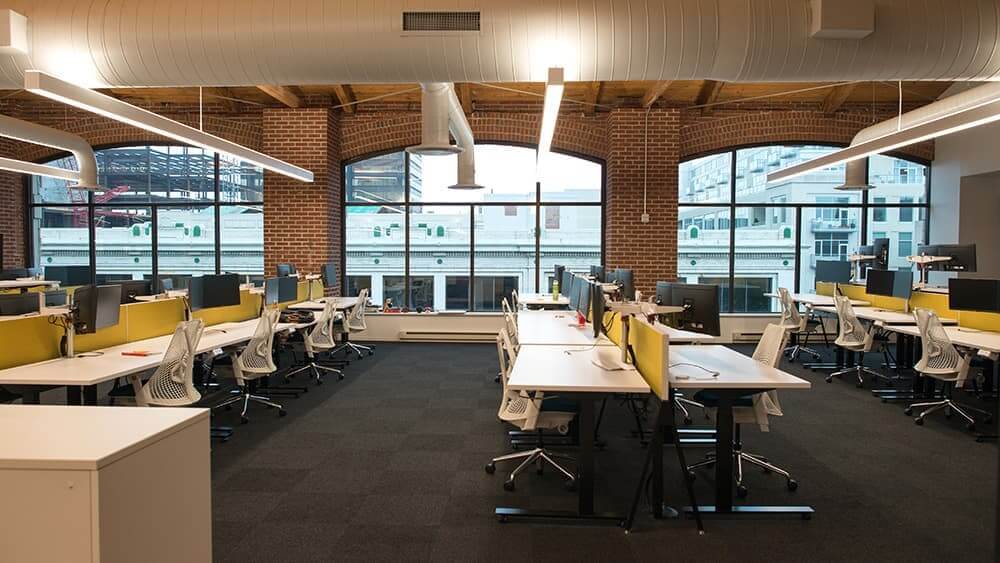It's that time of year when we take stock of our wins and losses, close the books, and look into our multi-faceted crystal balls for wisdom for the coming year. With a new decade ahead, a family business takes a slightly longer pause to reflect on past business performance and looks forward to 2020 family business trends to plan their course of action into the new year.
The teens of this millennium reflected their age. The 2010s teenager outgrew its clothes at rapid speed with growth in most business sectors and added dramatic mood swings with the surge of social media. Moving into the next decade, familiar challenges face most family businesses, but some more urgently than others. Familiar issues such as digital disruption to succession planning are moving center stage, while new challenges emerge such as reevaluating gig economy workers and open office floor plans.
The roaring ‘20s are upon us again. Let’s dive in.
AI Acceleration Speeds Digital Disruption for Family Firms
Global spending on cognitive and AI systems will reach $57.6 billion in 2021, according to market research firm IDC. It doesn’t stop there, the AI market will grow to a $190 billion industry by 2025, according to research firm Markets and Markets. The 2019 PwC 2019 Global Family Business Survey reported that digital disruption was one of the family business segment’s top growing concerns, but what exactly is keeping you up at night?
Cybersecurity for Small Businesses
Atop most CEOs’ lists is cybersecurity. Between a lack of knowledge of how company digital systems interact to concern over the security of network and cloud systems, most family businesses are right to be losing sleep. In fact 43% of cyberattacks are made against small businesses, up from 18% just a few years ago, according to Accenture. According to the National Cyber Security Alliance, 60% of small businesses that suffer a cyberattack go out of business within half a year. Recovery from an attack is costly; cybercrime costs small and medium businesses more than $200,000 a year, not including the cost of downtime, attorney’s fees, compliance and reputation cost (HISCOX).
Prevention is the best course of action for businesses no matter their size. And much like audits, thinking your business is too small to be subject to such a threat is foolish thinking. But where to start?
First, focus on the right processes and people. Without the right team in place either on staff or outsourced, managing risks around security, privacy and ethics becomes much harder to handle when an attack occurs. These experts are usually completely different from the type of hires that a family business may have made or have on staff. Roles include a chief information security officer, chief security officer, chief risk officer, and chief data officer who are often absent at many companies, not just family businesses, according to PwC’s latest Digital Trust Insights survey (formerly PwC’s Global State of Information Security Survey).
Don’t have an IT department? Take the time to understand your systems and processes. Don’t just hand something so important off to the most tech-savvy person in your firm. Questions to ask yourself include:
- What CRM are you using? Where is your customer data saved? Is the data saved securely?
- Identify sensitive data such as financials, contracts, and other IP, as well as who has access. Are these files encrypted and password protected? Where are they backed up?
- What is your back-up system in case of loss?
- What is your password policy? How often do you enforce password changes and where are they recorded?
- Is your data encrypted?
- Pretend you have a disgruntled employee. How much information can they access and how much damage could be inflicted? How would you detect an internal threat? Do you have a process in place for monitoring these threats?
- Evaluate your hardware and network. What is your computer software update schedule? How often are computers backed up? Do you have a network use policy? Can guests join your network? How is traffic monitored on the network?
After identifying weak areas, invest in a trusted partner to help you put together a plan that addresses your risks.
Family Businesses Focus on Upgrading Operational Systems for a Digital Economy
Not far behind cyberthreats looms another nightmare keeping today’s established firms up counting sheep — relevance in a digital age. There is no better time than now to optimize outdated systems with an eye on industry disruptors. For example, a long-distance trucking company might embrace technology to give customers a better user experience online in the short term, but should also have an eye on renewable energy’s impact on gasoline, driverless trucks, and now a new fleet of independent delivery services thanks to e-commerce giants such as Amazon breaking ties with traditional delivery companies such as FedEx.

Trendy but ineffective? From a negative effect on attention spans to higher stress levels, studies are revealing significant problems with the open office concept.
Sustainable Reinvention for Family Businesses
The key to sustainable growth is constant reinvention — the art of disassembling and reassembling your business for greater performance. It is easy, especially in a growing economy, to take a break from the reinvention cycle and ride the upmarket, but time-tested firms know there is no better time to double down on optimization. Gravity is real in business performance as well as the physical world — what goes up, must come down.
The process of reinvention doesn’t require a massive overhaul of systems at once. Large projects that overhaul major systems can be disruptive to a company that needs to continue to operate while change is taking place. Instead, consider a constant incremental improvement process.
Looking for a live example? Consider Amazon’s website. Amazon doesn’t relaunch its massive e-commerce experience every year; instead, the company rolls out small incremental changes based on data and buyer behavior throughout the year. Some are so small, you don't really notice but the end result is a constantly optimized experience.
Businesses Employ the OKR Methodology for Measurable Results
One way to approach this process is to embrace OKRs. OKR stands for objectives and key results. It’s a goal-setting paradigm that enables companies to define their objectives then track and measure their performance against these goals.
OKRs limit a company to focus on 3-5 objectives only and tie 3 measurable results to each. Set by leadership for the entire organization, leadership then works with department heads, managers and then individuals on how their OKRs align with the company’s overall OKRs. Success in this system relies on its limiting simplicity as everyone within the organization focuses on day-to-day execution. If anyone is working on something that doesn’t align with an OKR, it is leadership’s job to realign the employee. It's Google’s way of “eating the elephant.”
Oxymoron Economy
The best advice for any business heading into an election year after a period of unprecedented economic growth? Prepare for the worst, hope for the best.
Predictions for Moderate Growth in 2020
Today’s top economic minds can only forecast the future. Most experts forecast 2020 to be much like 2019. Growth of income and spending flatlined over the past year due to lower job gains resulting from the tight labor market. Unemployment is impressively low and businesses are challenged to find additional qualified workers. Wages also have not risen at the same rate as market growth slowing the income growth rate to levels now lower than in 2018.
But this is not doom and gloom for the economy. The employment market is steady, incomes are rising albeit slowly, and consumers are spending.
The Federal Reserve left rates unchanged in December. New economic projections showed a majority of 13 of 17 Fed policymakers foresee no change in interest rates until at least 2021 (CNBC). The remaining four federal policymakers predicted only one rate hike next year.
CNBC also reported that no policymakers suggested lower rates would be appropriate next year. The market notes this as a sign that the Fed feels it has managed a “soft landing” after a notably bumpy 2019 with recession risks, the U.S. bond yield curve inverting, and trade policy disrupting the markets.
Businesses Prepare for Economic Disruptors in 2020
Many factors come into play depending on your company’s industry and as 2019 taught us, unexpected threats to the economy and market can materialize from any corner — even our own.
- Tariffs
Tariffs weigh heavy on some industries such as manufacturing and consumer goods. The current administration has leveraged trade policy in new and unexpected ways that keep businesses guessing and have real and lasting impacts on entire sectors of the US economy. - Weather and Acts of God
2019 saw homes and businesses destroyed by fires in California, flooding in Texas and Mississippi and Arkansas, tornadoes across the middle and southeastern states, and a hurricane in North Carolina. Weather events such as these can’t be planned for and can destroy buildings, businesses, and lives. - Elections
Historically, markets respond better during election years when the results are more predictable. The S&P drops an average of 2.8% when a two-term president leaves office (Forbes). Most of the market reaction is emotional, but an election cycle year is noteworthy for its effect on the market and consumer spending.
Reevaluating Millennial Workplace Norms
Open offices. Remote work. The gig economy. Employers struggled in the 2010s to upgrade their work environments to attract millennial workers. Not everything influenced by this younger workforce was negative. Sustainability issues are no longer being championed just by the early adopters, but rather by the majority (EDF Climate Corps). Our definition of meaningful work has been challenged and workplaces have transformed to create alignment between profit and measurable impact.
While these changes transformed our workplaces in a positive way, others didn’t pan out.

“The key to sustainable growth is constant reinvention — the art of disassembling and reassembling your business for greater performance.”
Businesses Reevaluate Open Concept Offices
Harvard reported that open concept offices do exactly the opposite of what is intended; open-plan offices decrease rather than increase face-to-face collaboration (Inc). That’s right, open renovated warehouses with rows of mid-century modern benches may look perfect on the company Instagram feed but the old-fashioned cubicle nets better performance.
Instead of collaborating, employees retreat to email and messaging. Add the younger workforce’s familiarity and comfort with these communication devices and you have a perfect storm for decreased communication, collaboration, and efficiency.
Organizational psychologist Matthew Davis reviewed over 100 studies of open office environments; he found they had a negative effect on attention spans, creative thinking, productivity and job satisfaction (Entrepreneur). Employees who worked in open offices also had higher stress levels, lower concentration and lower motivation than those in standard office layouts.
The Queensland University of Technology found 90% of employees working in an open floor plan office had high levels of stress, conflict, high blood pressure, and more job turnover.
If you didn’t take the plunge and reconfigure the office, now would be the ideal time to invest the funds you didn’t lose in a renovation and consider a fresh coat of paint. For those that did, consider creating private spaces for groups as an alternative to your open floor plan.
Firms Evaluate Gig Economy Workers and Remote Work
Unlike open-concept offices, the jury is cautiously optimistic about remote work policies. According to stats from Global Workplace Analytics, once employers have a successful experience with a remote work environment, the following was found:
- 95% of employers surveyed stated that allowing telecommuting increases employee retention rates.
- 37% of teleworkers interviewed stated they would take a 10% pay cut in order to continue to work remotely. The savings in physically commuting, meals, etc., they believe, are worth at least that much.
- Employers also stated that remote workers tend to return to work sooner following health issues.
- Managers in large enterprises state that teleworkers are more productive than their counterparts on-site.
If you have an open office concept, enabling a remote work policy might help alleviate some of the negative effects of the office environment. While some companies have been able to move their entire operation remote successfully, many traditional family firms find this transition impossible due to stigma, industry or the actual work itself that must be performed in person.
When considering a remote work policy, keep in mind that what is expected must be clearly defined and you must have training and policies in place around the technology required to make remote work successful.
But what do you do when you consider replacing employees and transition to the gig economy? Caution.
Unlike remote workers, gig economy freelancers are not employees. You can engage them for projects but these freelance workers are hired as 1099 contractors. Simply put, the employer-employee relationship doesn’t exist in this scenario. Freelancers do not attend internal meetings, and cannot take direction and training from you and the company.
States like California are cracking down on companies that abuse the gig economy worker savings achieved through freelancers. Consider: am I hiring a consultant for this project who will bring their expertise to the job, or is this project something that requires management and guidance internally?
Succession Planning Surge
While the Decade of Disruption (source: MSNBC) brought succession planning into the conversation, the pace is quickening. According to PwC:
- 62% of family businesses expect upcoming family members to gain outside work experience
- 58% of family businesses have succession plans, however, most are informal
- 47% of next-generation leaders take on non-senior roles in the business
- 39% sit on the board of directors
The boomer generation started retiring in 2011 and will continue the retirement snowball through 2029 (US Bureau of Labor Statistics). Many generational companies are facing a passing of the business to the next generation of leaders, but over half are unprepared for that transition.
Investment in expertise to help lead succession planning has never been more critical — not just for the business but for the market. Family businesses account for 64% of U.S. gross domestic product, generate 62% of the country's employment, and account for 78% of all new job creation (Family Business Center).
Identifying the next generation of leaders and creating a cohesive transition of power is paramount for your family firm, if you find yourself within 10-15 years of retirement.


